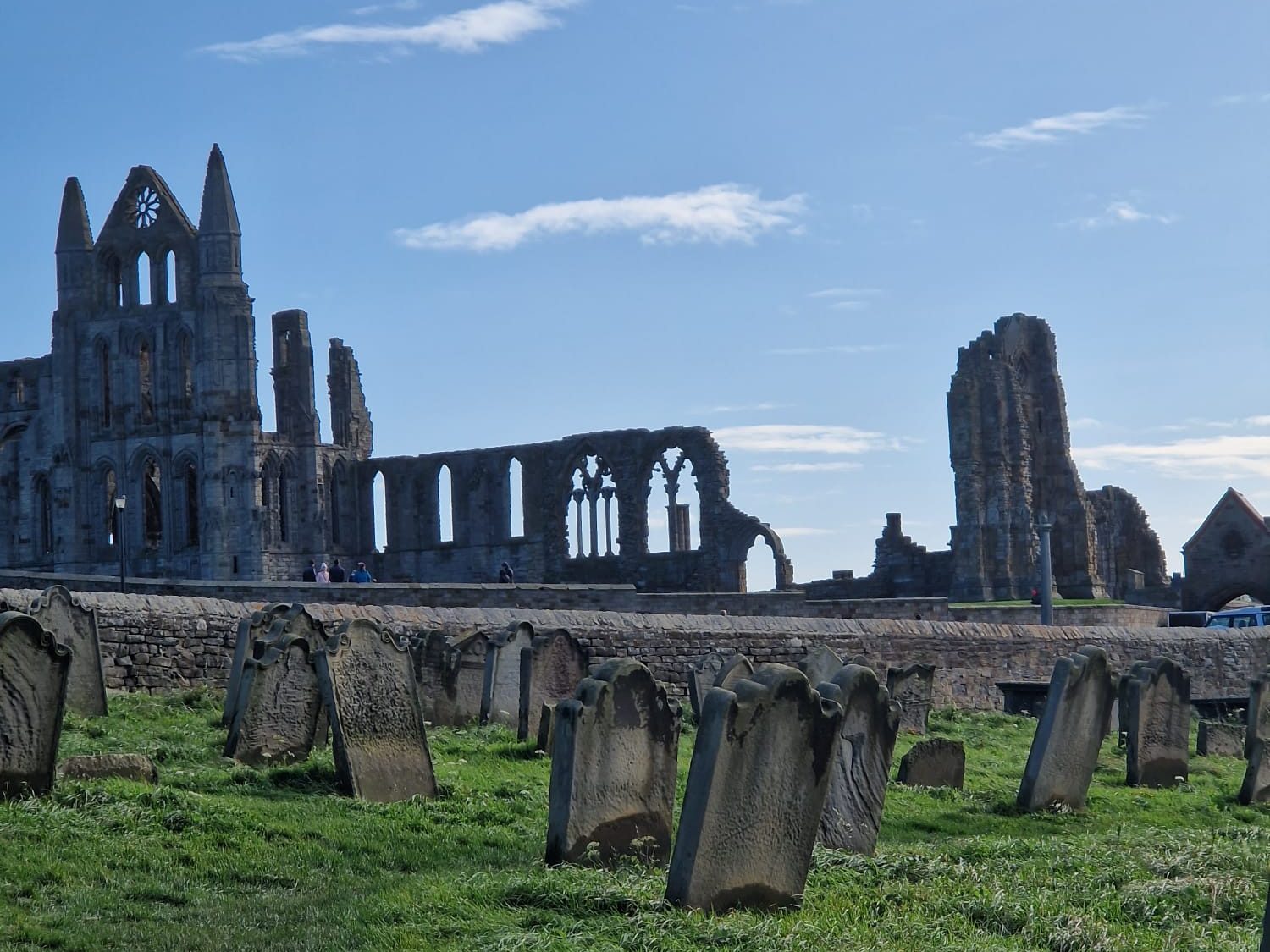No place on the Yorkshire coast has been visited by such a range of significant writers as Whitby.
Yes, the “red roofed fishing town below the green slopes with the ruined Abbey and church on the hill above” Whitby, just a two pound journey from York.
As an English student, I seized the opportunity to explore what makes Whitby so special that it has inspired writers for centuries.
Picture this:
On an early Saturday morning I leave York behind and embark on the famous Coastliner 840 route marketed as the “Most Scenic Bus Route.” To be honest, I think, they probably aren’t lying because waiting in a double-decker for sheep to cross the road in Goathland is only a sprinkling of what is to come.
“We are now approaching Whitby,” announces the recorded bus speech, the town’s scenic beauty now unfolding before me.
I begin wandering between cute shops on the west side of the town,but my literary exploration really starts at The White Horse, and Griffin Restaurant on Church Street. Here dined Charles Dickens… . Nearby, Elisabeth Gaskell stayed and likely set her novel Sylvia’s Lovers.
However, something more exciting catches my eye – The Whitby Bookshop, right next to the Restaurant, so charismatic! Their local books section overflows with various editions of Dracula.
Passing independent shops in the tiny vibrant quarter I can’t help but empathise with the authors’ choice of a place to stay. If only I had known that the streets are nothing compared to the coast!
As I stand by Whitby Harbour East Lighthouse, I alternately look up at the silhouette of Whitby Abbey and far away to the roaring sea, feeling as if I exist inside a Dixit card. For real!
The salty “spray-laden air accompanied by the echo in the cry of gulls” is trying to break into my ears, lamenting waves madly beating up the cliffs.
I send a text message to my friend: “No wonder Whitby is literary.” No wonder.
The boundless expanse and tireless strength of the sea evoke a sense of both humility and awe and gets me immediately contemplating.
Bram Stoker vividly describes Whitby Harbour in Dracula: “Masses of sea-fog came drifting inland – white, wet clouds, which swept by in ghostly fashion, so dank and damp and cold that it needed but little effort of imagination to think the spirits of those lost at sea were touching their living brethren with the clammy hands of death.”
199 steps (another inspirational spot for writers) lead me to Whitby Abbey.
I resist paying twelve pounds to get closer to the ruins, but meandering through St Mary’s Church is more than satisfactory.
For those unfamiliar, Whitby served as an inspiration and ingredient for Bram Stoker’s Gothic novel Dracula (even for its name!) partially centred around the Abbey. Not surprisingly! The abbey ruins and the windswept churchyard on the cliff almost awakened up the poet inside me.
As if this isn’t reason enough to believe in Whitby’s charm, I remember Caedmon, the first named English poet, found his muse when he resided here on this East Cliff, caring for animals. Oh to be a sheep on the Yorkshire coast!
According to National Geographic, this tiny city offers the best fish and chips in the UK. Enjoying them, I sit on a bench in front of the hotel where Lewis Carroll was a frequent guest.
Well, I think, no wonder he found creative fuel for writing Alice in Wonderland when he could absorb this view of the entire East coast, port and the lighthouses! (picture)
After a long and cold day, I head back to York, looking for the cosiness of college.
While taking notes about what I have just experienced, I realise that unfortunately I am simply no Bram Stoker, unable to vividly capture Whitby’s essence on paper.
But let me tell you: the atmosphere really is something else . For writers, if you haven’t already, you really should explore the place personally – whether from a literary, culinary or purely scenic perspective.
Just be ready for the brisk wind and, perhaps, catching a muse too, because the town has the power to spark creativity.
